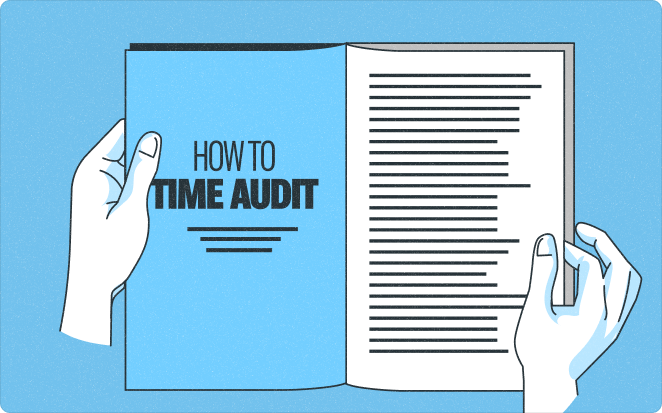Time audit – where is your time going?

A time audit is a valuable tool for assessing how you spend your time and identifying areas where you can make improvements for better productivity and efficiency. By conducting a time audit, you can gain insights into your daily routines, habits, and activities, allowing you to make informed decisions about how to manage your time effectively.
Get more out of your business
Get the best employee engagement content every week via mailing list
Why Do a Time Audit?
Curious about the benefits of doing a time audit? Let’s dive right in and explore why a time audit is worth your while. Discover how a time audit can help you gain clarity, maximize productivity, and effectively prioritize your tasks. Say goodbye to wasted time and hello to a more efficient and fulfilling day. Get ready to take control of your time like never before and unlock the secrets to achieving your goals.
Benefits of a Time Audit
The benefits of a time audit include:
- Increased productivity by identifying time-wasting activities
- Better time management through setting priorities and goals
- Improved work-life balance by allocating time for personal activities
- Enhanced decision-making by understanding how time is spent
- Opportunity to cultivate efficient habits and eliminate time wasters

Step-by-Step Guide: How to Do a Time Audit
Ready to take control of your time? In this step-by-step guide, we’ll walk you through the process of conducting a time audit. From setting your goals and purpose, to tracking your time and analyzing your time log, we’ll cover it all. Discover the power of prioritization and goal-setting in Step 4, and learn how to create an effective time management plan in Step 5. We’ll show you how to implement your plan and evaluate your progress in Step 6. Get ready to optimize your productivity like never before!
Step 1: Set Your Goal and Purpose
- Reflect on your objectives and what you hope to achieve with the time audit
- Clearly define your goals for better time management
- Identify the purpose behind conducting the time audit
- Consider the specific areas of your life or work that you want to improve
- Ensure your goals and purpose align with your overall objectives and priorities
Step 2: Track Your Time
- Choose a tracking method that suits your preference and lifestyle.
- Determine the time frame for tracking, whether it’s hourly, daily, or weekly.
- Record your activities accurately, using a time tracking app, spreadsheet, or pen and paper.
Remember to stay consistent and disciplined throughout the tracking process for an accurate analysis of your time usage.
Choose a Tracking Method
- Use a notebook or a journal to manually record your activities throughout the day.
- Create a customized spreadsheet to log your time and activities.
- Download time tracking apps like Monitask for convenient tracking on your smartphone.
Determine the Time Frame
Determine the time frame for your time audit to ensure accurate tracking. Consider using a weekly or monthly time frame, depending on the level of detail needed. It’s important to choose a timeframe that aligns with your goals and allows for comprehensive analysis. Assess your schedule and commitments to establish the most suitable time frame for your time audit.
Record Your Activities
- Record your activities throughout the day.
- Take note of the start and end times of each activity.
- Be specific and include any breaks or interruptions in your record.
- Utilize a time tracking app or a physical journal to document your activities.
- Make sure to include both work-related and personal tasks in your log.
I once made the decision to record my activities for a week. It was truly enlightening to observe how much time I was dedicating to unproductive tasks. By maintaining a record, I was able to identify areas where adjustments were needed and effectively prioritize my time.
Step 3: Analyze Your Time Log
Categorize your activities to identify patterns and areas of improvement
Look out for time wasters that can be minimized or eliminated. Remember, the goal is to prioritize tasks and create an efficient time management plan for increased productivity and effectiveness.
Categorize Your Activities
| Activity Category | Description |
|---|---|
| Work | Tasks related to your profession or job. |
| Personal | Activities for self-care, hobbies, and leisure. |
| Family | Time spent with immediate family members. |
| Health | Exercise, meal planning, and other health-related activities. |
| Errands | Tasks such as grocery shopping, paying bills, and running errands. |
| Social | Interactions with friends, attending social events, and networking. |
In order to effectively manage your time, it is important to categorize your activities. This allows you to categorize your activities and have a clear understanding of how you spend your time and prioritize accordingly. Some common activity categories include work, personal, family, health, errands, and social. By categorizing your activities, you can assess where you spend the most time and make adjustments to achieve better time management.
Historically, time auditing and categorizing activities has been an effective tool in improving productivity and maximizing efficiency. It provides valuable insights into how time is allocated and helps identify areas where adjustments can be made for optimal time management.
Identify Time Wasters
- Identify unproductive meetings and find ways to make them more efficient.
- Recognize excessive time spent on social media and establish boundaries to limit distractions.
- Minimize constant interruptions and distractions by creating a conducive workspace.
- Combat procrastination and improve focus through effective time management techniques.
- Avoid overloading yourself with unnecessary tasks by prioritizing and delegating responsibilities.
Step 4: Set Priorities and Goals
Remember to regularly review and adjust your priorities and goals as circumstances change.
Step 5: Create a Time Management Plan
Once, I struggled with managing my time effectively. After implementing a time management plan, I saw significant improvements in my productivity and overall satisfaction with my work. It helped me prioritize tasks, take necessary breaks, and utilize techniques like the Pomodoro Technique to stay focused. This experience taught me the importance of creating a time management plan for achieving success. Step 5: Create a Time Management Plan.
Allocate Time for Important Activities
- Identify your important activities and prioritize them based on their significance and impact.
- Allocate specific blocks of time in your schedule for each important activity.
- Avoid overcommitting yourself and ensure that you have realistic time frames for each task.
- Use time management techniques such as the Pomodoro Technique or time blocking to optimize your productivity.
- Utilize tools like calendar apps or task management software to help you stay organized and on track.
True story: A busy professional found that by allocating dedicated time for important activities, such as a daily hour for learning and development, they were able to make significant progress in their career and personal growth. They achieved a better work-life balance and had a sense of fulfillment and accomplishment.
Schedule Breaks and Rest
- Schedule regular breaks and rest throughout your day to recharge and prevent burnout.
- Allocate specific time slots for rest and relaxation activities, such as meditation or taking a walk.
- Use techniques like the Pomodoro Technique to schedule breaks and rest by breaking your work into intervals.
- Utilize time management tools like productivity apps or timers to remind yourself to schedule breaks and rest.
True story: A friend of mine was constantly working long hours without taking scheduled breaks and rest. Eventually, he hit a wall and experienced severe burnout. After that experience, he realized the importance of scheduling breaks and rest, and now ensures to include them in his daily routine to maintain a healthy work-life balance.
Use Time Management Techniques and Tools
- Use time management techniques that work for you, such as the Pomodoro Technique or the Eisenhower Matrix.
- Utilize tools like time tracking apps or planners to help you stay organized and monitor your progress.
- Implement techniques like prioritization, delegation, and batching to optimize your time.
- Explore productivity apps and software that can assist in managing tasks and schedules effectively.
- Regularly evaluate and adjust your time management strategies to ensure ongoing improvement.
Remember, finding the right combination of techniques and tools is key to effective time management and productivity.
Step 6: Implement and Evaluate
In the 1960s, the Apollo Guidance Computer implemented by NASA’s engineers played a crucial role in the success of the Apollo missions to the moon. This computer, with its innovative technology, allowed astronauts to navigate, land, and return safely to Earth. Its development and evaluation marked a significant milestone in human space exploration.
Tips for Successful Time Audit





Remember, the key to a successful time audit is being honest with yourself and making necessary adjustments to improve your time management skills.
FAQ
How do you write a time audit?
Step 1: Set Your Goal and Purpose
Clearly define why you want to conduct a time audit and what you hope to achieve from it.
Step 2: Track Your Time
Choose a tracking method that works best for you.
Step 3: Analyze Your Time Log
Categorize your activities into different groups such as work, personal, leisure, and self-care.
Step 4: Set Priorities and Goals
Based on your analysis, prioritize your activities and set goals that align with your values and objectives.
Step 5: Create a Time Management Plan
Develop a structured plan to manage your time effectively.
Step 6: Implement and Evaluate
Put your time management plan into action and consistently evaluate your progress.


